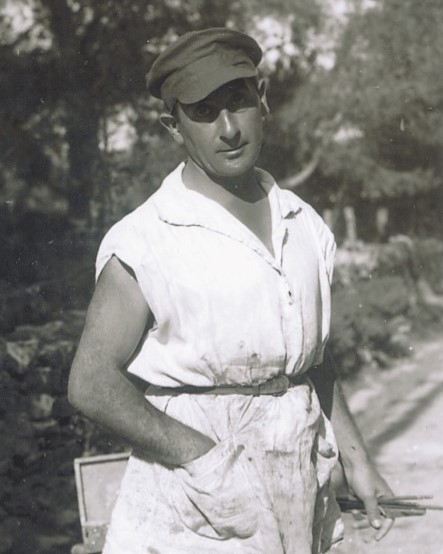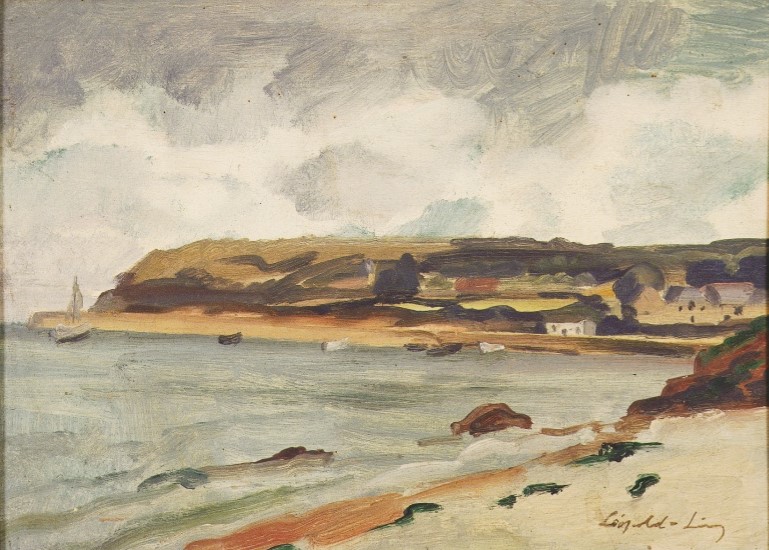Zygmunt LANDAU
January 3, 2019Jane LÉVY
January 3, 2019LÉOPOLD-LÉVY (born Léopold LEVY)
PARIS 1882-1966
Léopold-Lévy was the youngest child in a family of industrialists. Originally from Sélestat, in the Alsace region, his father opted for France in 1870 after the Franco-Prussian War in order to avoid being subject to German authority. He was an art lover, spent time at Drouot auction house, collected works by Courbet and Corot, and passed on his taste of art to his son. Léopold-Lévy lost his father at the age of eleven and decided to become a painter. He failed the entrance examination for the Ecole des Beaux- Arts in Paris, spent much time at the Louvre, and admired works by Cézanne and Renoir. He met the sculptor Charles Despiau and the painter Georges Linaret (who died suddenly in 1905). This group met to paint and talk in the Luxembourg Gardens. Léopold-Lévy produced cartoons for several journals including Rire and Pêle-Mêle. In 1900, he exhibited his paintings for the first time at the Salon des Indépendants, in the group of fairground huts on Cours-la-Reine.
In 1914, Léopold-Lévy was mobilized to join the army. After the war, he left Paris and discovered Italy and Provence. Between 1920 and 1922, he met Jean Dufy and Jean Marchand in Cassis. The next year, in La Ciotat, Léopold- Lévy frequented Georges Braque and André Derain who lived near him. From 1927, he spent his time between Aix-en- Provence and Paris. He left for Istanbul in 1936 to run the painting department at the School of Fine Arts. During these years when he was teaching, he only exhibited his work twice, at the Art Academy in Istanbul and at the French consulate. Léopold-Lévy returned to France in 1949 and spent his time between Provence and Paris.
Stories of Jewish Artists of the School of Paris 1905-1939
FRENCH-ENGLISH
Capitale des arts, le Paris des années 1905-1939 attire les artistes du monde entier. De cette période de foisonnement, un terme est resté, celui d'Ecole de Paris, qui recouvre une grande diversité d'expression artistique. Dans ce brassage dont Montparnasse est le creuset, un groupe se distingue : celui des artistes juifs venus de Russie, de Pologne et d'Europe centrale. Si leurs styles sont variés, un destin commun les rassemble : ils fuient l'antisémitisme de leur pays d'origine. Certains ont connu la célébrité dès les années 1920, tels Soutine, Lipchitz ou Chagall. D'autres n'ont pas eu le temps ou la chance d'y accéder. Près de la moitié a péri dans les camps de concentration nazis.
From 1905 to 1939, Paris attracted artists from all over the globe as the capital of the art world. This period of artistic proliferation became known as the School of Paris, and includes a great diversity of artistic expression. Within the teeming art world centred on Montparnasse, one group set itself apart: Jewish artists from Russia, Poland, and Central Europe. Although their styles were diverse, they shared the common fate of fleeing anti-Semitic persecutions in their home countries. Some became famous in the 1920s, such as Soutine, Lipchitz, and Chagall, while others did not have the time or the luck to gain renown. Nearly half of these artists died in Nazi concentration camps.






